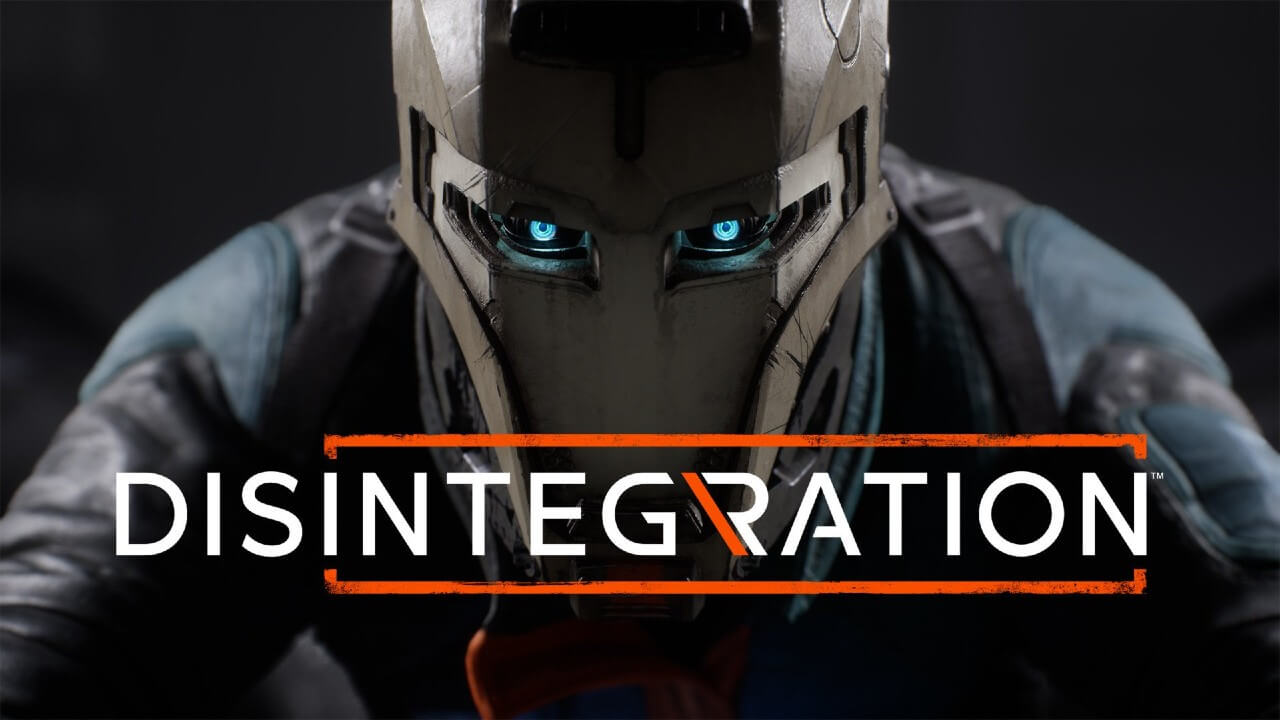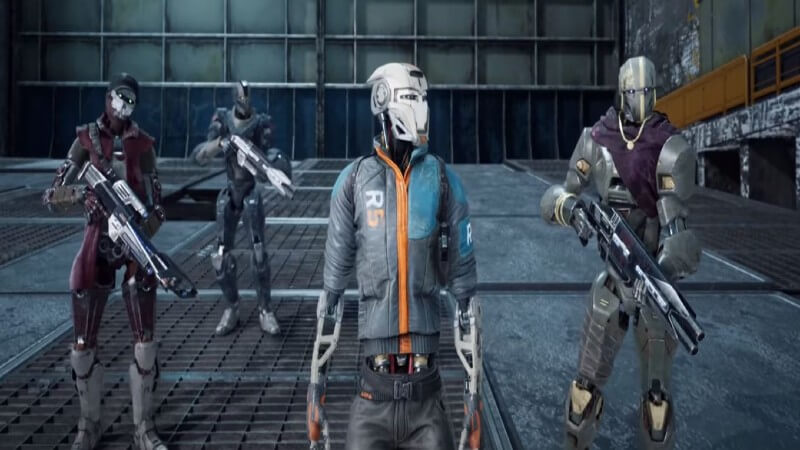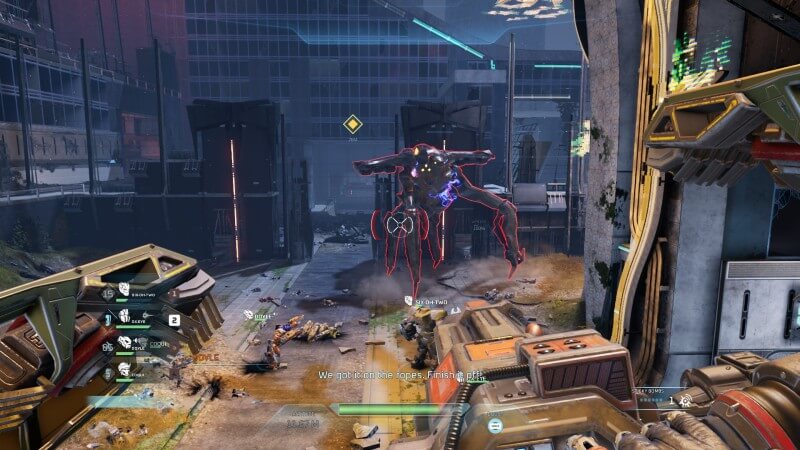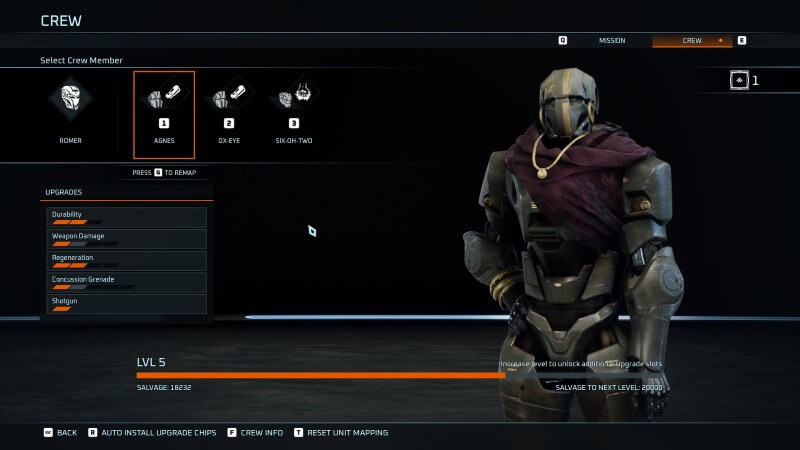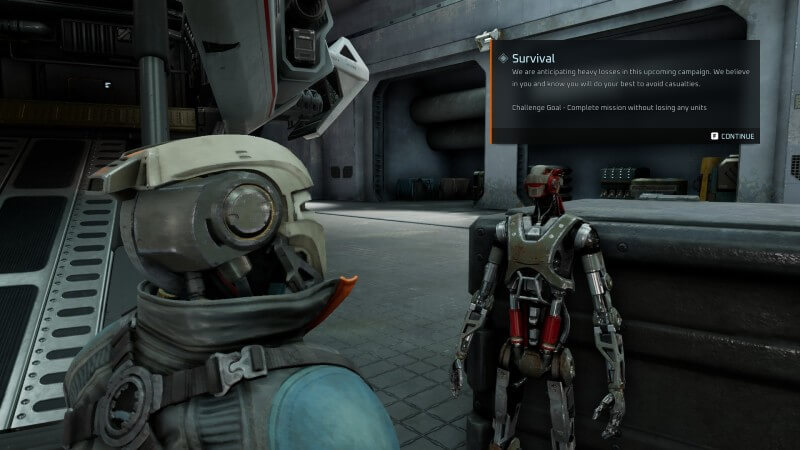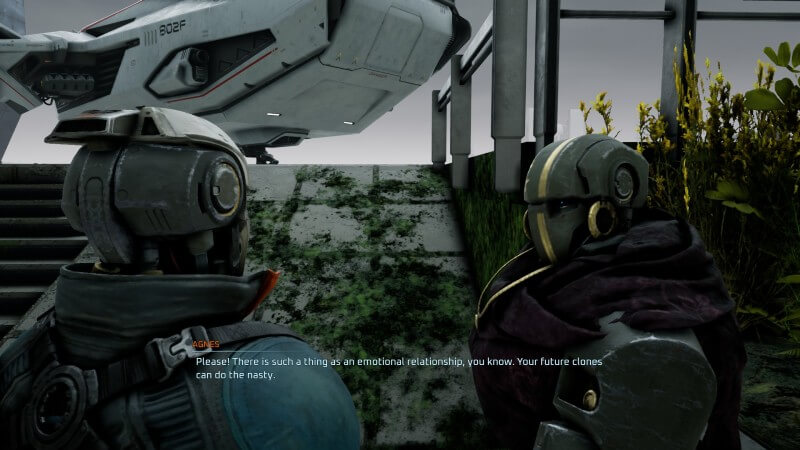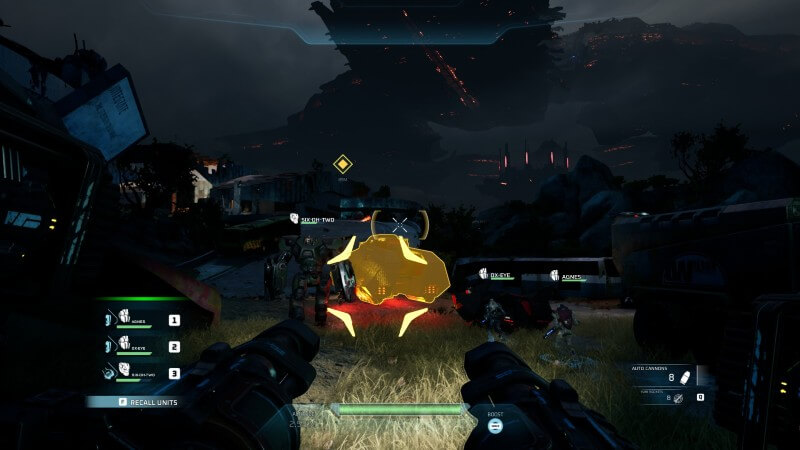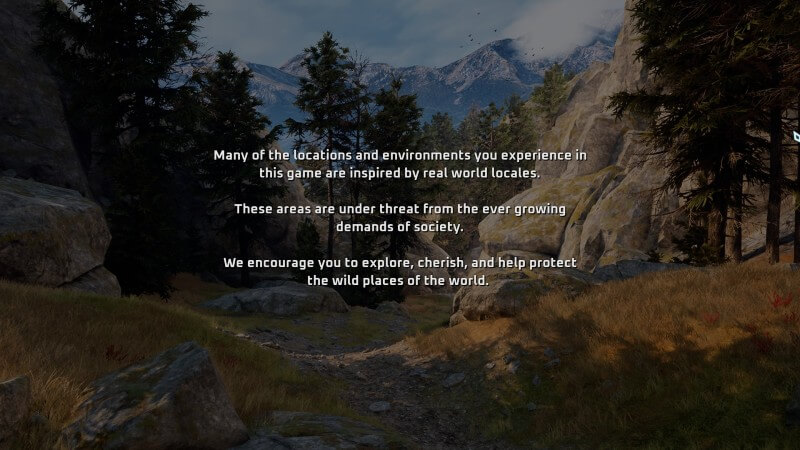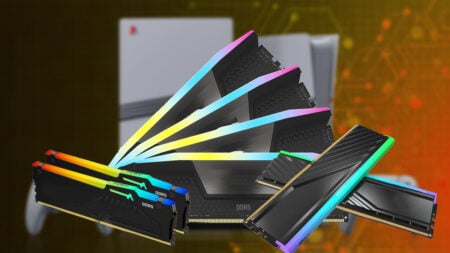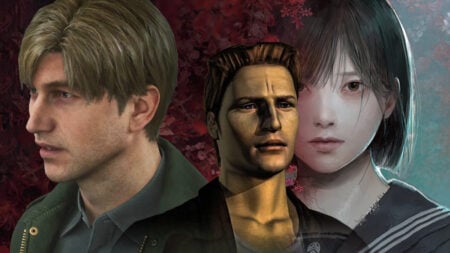Title: Disintegration
Developer: V1 Interactive
Publisher: Private Division
Genre: First-person Shooter, Real-Time Strategy
Available on: PC, PS4, and
Official Site: disintegrationgame.com/
Version Tested: PC
Release Date: June 16, 2020
It’s time to take the action to the skies with your trustworthy gravcycle in Disintegration, the debut title from developer V1 Interactive.
Set in the not-so-distant future, climate change has greatly impacted the Earth, purging the planet’s valuable resources and endangering the wellness of the people. In order to preserve humanity, a team of scientists created a way to transfer the human brain into a robotic armature, ultimately eliminating essential ways of life that a person would normally depend on. The process was simply called “integration”.
But the power struggle for the integration process has become corrupted. The militant group known as the Rayonne grew in dominance and authority, forcing individuals to integrate against their will. There’s only the resistance now that can fight against the Rayonne and their massive Iron Cloud that darkens the sky. But the resistance might need a little bit help from Romer Shoal, Disintegration‘s protagonist who pilots a gravcycle and helps assembles a team to take down the Rayonne.
Lock, Load, and Command With Your Gravcycle in Disintegration
Disintegration‘s core gameplay mixes the genres of real-time strategy and first-person shooter into a solid hybrid of the two. Through the eyes of Romer, you control his gravcycle close to the ground or high in the air as you command your 2-4 person on-foot squad. You can give them certain actions to do in terms of looting crates, targeting enemies, and completing objectives, all the while you stay close to the skies. Pinning an area for them to go to can be useful in combat since they follow wherever you’re pointing at, which can be both helpful and challenging if you have a squad of foes gunning you down like hellfire.
Reboot Humanity in Disintegration
There’s definitely a thrilling effect to this, though, as you get more accustomed to the feeling and weight of the gravcycle and get the hang of being in charged of a squad on the ground. I would get excited whenever a behemoth Headhunter would land into battle, and my team would just charge at it all at once. Each member has an ability that can utilized in combat to bring the favor more so into your odds in the warfare of Earth robots. Some have concussion grenades to stun enemies, while the bigger mates such as Doyle and Six-Oh-Two can provide heavier support with a mortar strike and a ground slam that can be effective against swarms of opponents or bigger integrated followers of the Rayonne. These can be upgraded with collected Upgrade Chips that you gather from searching crates and completing challenges, along with advancements toward Romer and the team’s individual stats for Durability, Weapon Damage, and Regeneration.
What Goes Up…
Sadly, the campaign fails to offer some sort of customization for you and your squadmates. Your gravcycle is outfitted with a fixed loadout for each mission that you can’t change, and you can’t go back to a previous level to see if anything new can be ventured into. Merely the difficulty change is there to supply different game experiences, but if that’s all I can alter, what’s the point of revisiting the campaign if I’m just using the same linear gameplay as before? It would help if the in-between mission break inside Old Meg’s hangar wasn’t so dry. It’s here where you interact with the characters for either a dialogue exchange or details regarding the upcoming mission’s challenges. Once you talk to everyone, the silence of the enormous and boring hangar practically begs for a musical cue as you walk around looking for nothing special, with only the screen of the mission monitor awaiting your next move.
The combination of RTS and FPS mechanics is a fantastic notion to bring forth in the video game world, but the anticipation dies down in each level after the other like a rinse-and-repeat tale: you’re just doing the same thing until you try to find new ways to use your fingers, but there’s only a few routes you can use as opposed to many.
Furthermore, Disintegration depends on a checkpoint system for saves in lieu of the commonplace “Save Game” option that is seen in almost every other video game title. This means that if you want to take a break from the game because “Mission Failed” keeps popping up and screwing with your sanity, you will have to restart the entire mission, and not even to the last checkpoint of that said mission. The checkpoints only exist within the same gameplay of the level, and their purpose is obliterated once you turn off the game.
There’s a certain mission where you have to transfer cores onto rockets in the middle of a scrapyard; during the objective, you will face-off against enemy-piloted gravcycles, whose aims are almost always perfect, and dodging them can be stressful if you can’t find a spot to hide out for a bit until about 15% of your health regenerates. I kept dying from the encounter (and I played on Maverick difficulty, which is the game’s preferred experience), so I turned off the game, unknown to my knowledge that the absence of the save game feature was even a thing. When I returned to Disintegration and it forced me to restart the game, an egress of deep sighs was met with utter disappointment. This was when the game was beginning to die down, and this particular mission is a little more than halfway through the storyline.
The Bell Ringeth for the Resistance
Although the gameplay might be a miss for Disintegration, the sounds of audio effects, voices, and music land on the other side of the spectrum. The overall sound design is nothing special and new, but there are barely any issues with it in terms of breakage, interference, and blending. It almost all sounds pretty crisp, and the weapons are fun to power up and shoot, especially the multi-rocket launcher that can target specific foes and blast them away.
I’m sure the sound design in Disintegration is probably one the game’s highlights. I thoroughly enjoyed the work of the voice actors for their efforts in bringing a realm of humanity into robotic characters. Jeff Schine (who will be voicing Captain America in the upcoming Avengers game from Square Enix) establishes a comfy and rebellious attitude as Romer Shoal throughout the campaign; Hal Williams (Lester Jenkins from the 80s sitcom 227) voices the cool and aging Waggoner, who dreams of seeing the ship named Old Meg float for the resistance one day; and Jon Bruno (Voodoo from 2010’s Medal of Honor and its sequel, Warfighter) is the villainous Black Shuck, whose distorted and dark vocals make you wonder what nightmares he has conjured for the victimized beings that underwent forced integration. If the Decepticons were to feature human-sized versions of themselves, Shuck would definitely be among them. The synergy of the voice actors really bring the world-building aspect to a more grounded level, and their sincere interactions – along with some comedic relief from the other Outlaws on your team – provide some incredible character moments in the campaign that I won’t spoil here.
Disintegration‘s musical score from composer Jon Everist is undoubtedly my favorite ingredient in the game. It fits so well with the sci-fi universe that Marcus Lehto (co-creator of the Halo series) attempts to put together with themes of revolution, evolution, and Earth pollution. Some of it may sound slightly filler, but the general delivery of Everist’s music suits nicely with the constant combat you will face, all the while as you transverse the ever-changing world. The mixture of synths, brasses, and strings of violins are just enthralling. The few tracks that stood out to me – when I listened to the score on Everist’s Bandcamp – were “Windlass”, “Black Shuck’s Theme”, “The Iron Cloud”, “Romer’s Theme”, “Rayonne Territory”, and the “Main Theme”. You do get some of that Halo aesthetic here and there, but Everist’s composition is quite distinctive in its execution with a taste of inspiration from Bungie‘s original Master Chief adventures.
A Decaying Earth and its Robotic Denizens
When it comes down critiquing Disintegration‘s graphics, not much can be applauded for its cinematic scenes as opposed to the actual gameplay in the campaign. While the voice acting is solid for this title, the lip-syncing and the character animations are a little off. The way their mouths move are kind of close to being aligned with the dialogue, and this small error becomes overly distracting when you’re listening to the voices and what they’re saying. I wasn’t a huge fan of the animations, yet the story was engaging enough for me to temporarily ignore it and look forward to the battles rather than the next cinematic. Some of it looks clunky, some of it looks well-polished. This inconsistency was starting to wear out quickly, and it’s the reason I chose to skip repeated cutscenes (upon turning Disintegration off and later returning to it) since nothing special would trigger my interest – just the distraction of the weird character animations would take over and my head would shake at the scene.
Aside from the animation side of the graphics, the level design and environments aren’t half bad. In fact, they’re wonderful to gaze at when you’re smooth sailing through the sky in your gravcycle. Land has been corrupted by pollution, so it’s normal to see debris, abandoned areas, and the vicious and monumental Iron Cloud of the Rayonne that dominates any scene that its featured in. With set pieces such as the Iron Cloud, you get a bigger picture of epic space conflict when it becomes your mission to chase down the floating structure of doom. That’s why going through the campaign and each of its levels makes Disintegration worth playing. Marcus Lehto’s direction and his team have done exceptional work with creating the world of Disintegration, and it makes me wonder if they plan on doing more with the lore they have established.
Disintegrated
With Disintegration featuring a multiplayer mode and a single player campaign, there’s not a lot of content here for players to come back and relive. While the single player experience is something that should be considered down the line, the ending comes to a quick close, and I was left unsatisfied with the adventure I had invested about 10 hours with. Without spoiling anything, I ended the storyline with an ambiguous realm of thought, wondering who went where and what will happen now. It ends with a hint for a sequel, but you barely get an important closure that would drive the tale of Disintegration to a solid finish line. It may be open-ended with good intention (as respected with a message in the credits in briefly talks about pollution), but all those bullets, robots, and looting didn’t feel like a win to me as I would analyze the game and come up with dull results. Still, the characters, the action, and the world-building is great; it’s the ending that some might find to be problematic.
And in terms of multiplayer, there basically isn’t one. Fellow Nerd Stash writer Matthew Kowalski and I were talking about matchmaking over a weekend, and the idea was quickly tossed out the window due to the extremely low player count for Disintegration. According to Disintegration‘s Steam Chart, there were merely 21 individuals that were playing the game at the time when me and Matthew were planning on getting into the multiplayer. When I started the campaign, there were just six other active users. And currently, as I write this review, there are 15 at the moment, with 11 when I began to compose this assessment. Still, I tried matchmaking, and nothing would happen. After 10 minutes of waiting for a match to connect – or even begin – the timer will stop, and you will have to click the matchmaking option once more, only to end up with the same outcome of nothingness. I once sat for an entire hour (while listening to music to help pass the time) matchmaking, and still I would end up with just the menu and no action. I customized my crew and myself as I waited, hoping that something would happen. With a dead multiplayer mode, it’s hard to critique it since I literally can’t play a match; even if I did, the time-spaces in-between the matches wouldn’t suffice for proper reviewing. Frankly, it’s disappointing to see that almost no one is interested in trying out the multiplayer aspect of Disintegration.
https://www.youtube.com/watch?time_continue=9&v=yBwNYDchjyE&feature=emb_logo
Verdict: Verily, Disintegration offers new ideas and explores a subgenre mix of both FPS and RTS that is both intriguing in action but poor in delivery. With the lack of customization and a neglected multiplayer mode, the replay value is almost non-existent. I played through the campaign once, and I was done with the repeated gameplay before the credits rolled. Going back to a mission for a lovely revisit isn’t in my agenda, and I can only hope that the developers come up with noteworthy downloadable content to keep Disintegration afloat. Unfortunately, it seems like the game is dying out quickly. Not enough people are playing it, and its lack of a fun factor might be the cause for that. If you want a sci-fi narrative that asks some thought-provoking questions, the campaign might be something that several players will find appealing. Anything beyond that, though, players will find a plain endgame and nothing to help them determine if they should play more of Disintegration. Perhaps V1 Interactive’s next title will be an improved experience if they happen to develop a project in the near future. But for now, Disintegration both hits and misses the mark of introducing a hybrid genre with a new universe for players to get invested in and explore throughout.
[review]

